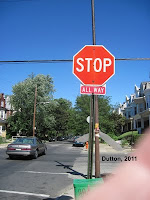 |
| Rebecca Dutton Home After a Stroke |
 Giving Power Point presentations to stroke support groups forced me to learn how to use a digital camera. Using my camera for a year showed me I have a new hobby I can enjoy. Now I e-mail photos to my family, put photos on my blog, put photos on coffee mugs, use photos to get my landlord to fix things around my house, and have a way to save beautiful memories like this visit to Sayen Gardens. Here are some problems I had to solve along the way.
Giving Power Point presentations to stroke support groups forced me to learn how to use a digital camera. Using my camera for a year showed me I have a new hobby I can enjoy. Now I e-mail photos to my family, put photos on my blog, put photos on coffee mugs, use photos to get my landlord to fix things around my house, and have a way to save beautiful memories like this visit to Sayen Gardens. Here are some problems I had to solve along the way.(1) I knew I would have trouble holding the camera still with one hand so I wouldn't get blurry photos. Cannon has several cameras with Image Stabilization which corrects for movement that occurs when I press down on the shutter button. (2) Instead of buying on-line, I went to a store so I could play with several different cameras. Going through sub-menus to choose different focus options was difficult with one hand. My Cannon Power Shot A1100 model has a round dial on top of the camera that I can turn to different settings. I turn the dial so the arrow is pointing to the small icon I want and I'm done.
(3) I had to learn to use three fingers of my sound hand to hold the camera while the index finger of the same hand pushes the shutter button. (4) Using my sound left hand creates another problem. Shutter buttons are always on the right so sometimes I get a photo with a finger partially covering the lens (see bottom right corner of photo). I'm saved by viewing a photo and reshooting if needed. (5) Impaired standing balance forces me to look at my surroundings to stay vertical. Holding the camera at arm's length to look at the LCD monitor instead of holding the camera to my face to look through the viewfinder solves this problem. Anti-depressants don't just come in the form of a pill.
See the original article:
in



No comments:
Post a Comment